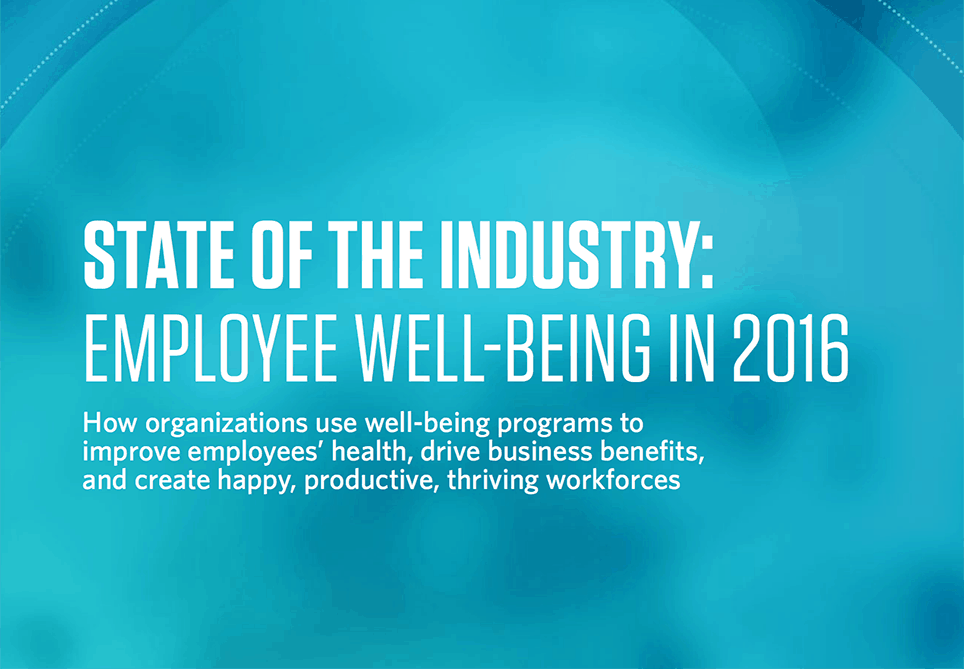Cognitive Learning Fuels the Corporate Wellness Movement

Organizations are using a variety of well-being programs to improve employees health, drive business benefits, and create happy, productive, thriving workforces.
Many factors affect employee well-being: health, stress, working conditions, family circumstances. Well-being affects productivity, morale, work culture, and work outcomes.
Well-being isn’t just a human resources initiative, it’s an organizational imperative. Organizations need solutions that address all aspects of their employees’ well-being: physical, mental, and emotional.
Big organizations are at the forefront of offering programs to address mental and emotional health in addition to physical health. A growing number of organizational leaders are taking a more holistic definition of well-being and seeking to improve engagement, productivity, and culture.
Well-being in Education
Many HigherEd institutions appreciate the benefits of promoting well-being for both staff and students:
- University of Miami offers a PhD program in well-being committed to producing “community-engaged scholars who promote individual, relational, and collective well-being through community-based research and action.”
- The Wellness Committee at Champlain College works to create a culture of wellbeing wherein all employees are encouraged to participate in diverse and holistic activities that engage, excite and empower individuals to discover paths to wellbeing. The committee seeks to provide “resources, programs and community that will induce employees to be stewards of their physical, social and spiritual well-being while improving their overall health.”
- A growing number of colleges have a wellness manager like Charles Walker at St Bonaventure.
The Australian government is a leader in well-being; states actively support this direction include Victoria, Queensland, and New South Wales.
In Europe, work is coordinated by the Learning for Well-being Consortium of Foundations. Scotland has a well developed approach to well-being.
EdSource reported this month on well-being in K-12 education calling it a “major school reform initiatives rooted in improving the physical, emotional and behavioral health of children and teens.” In the well-being wave they include social and emotional skill-building, trauma-informed teaching and school-based health centers. Goals include better attendance, fewer discipline referrals fall, less teen pregnancy, and higher engagement.
As we recently noted, many school districts and networks are formalizing an approach to “success skills” or “habits of success” including academic behaviors, self-direction, positive mindsets, and social skills.
Well-being Report
Virgin Pulse, in collaboration with the Human Capital Media Research and Workforce magazine, conducted a worldwide survey of 1,076 HR management professionals across a broad range of industries and organization sizes.
The report suggests that, like schools and universities, employers are looking beyond traditional programs and toward ones that treat more than just physical health. Executives report that top goals for well-being initiatives including improving productivity (85%) and improving engagement (83%).
The report listed five key findings:
- Organizations purchase well-being programs to improve productivity, increase engagement, and better their culture. Primary organizational motivations mostly align with business outcomes.
- Senior-level executives take a more holistic view of well-being programs than manager-level professionals.
- Employee well-being affects all areas of the organization, from internal engagement to external success.
- Many organizations, especially those with more than 10,000 employees, take a holistic approach to well-being, offering programs for physical, mental, and emotional health.
- In 2016, organizations will increase budgets and add or consolidate vendors to address top challenges and priorities.
Cognitive Learning Market
The Cognitive Learning Theory explains why the brain is an efficient information processing system. It combines Social Cognitive Theory and the Cognitive Behavioral Theory. Social Cognitive Theory considers behavioral, environmental, and personal factors. Cognitive Behavioral Theory further explains human behavior and learning by considering self, the world, and the future.
Thirty five Cognitive Learning suppliers raised $285 million in 2015 led by Virgin Pulse which obtained $92 million in May 2015, the largest investment in this category.
Virgin Pulse, part of Sir Richard Branson’s Virgin Group, provides online tools that help employees build better habits and drive utilization across human resource investments.
For more, see
- Happify: The Science of Emotional Wellbeing in a Mobile App
- Third Metric Living: Well-being, Wonder, Wisdom and Giving
- Social Emotional Learning in Action: How a Leading District Responded to the Community’s Clarion Call
Stay in-the-know with all things EdTech and innovations in learning by signing up to receive the weekly Smart Update.





0 Comments
Leave a Comment
Your email address will not be published. All fields are required.